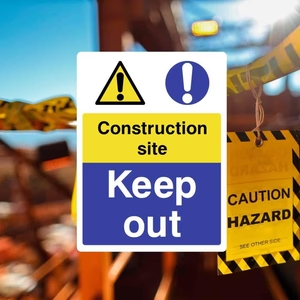Construction sites are some of the most dangerous workplaces in the UK, with the risk of injury or death a very real concern for those who work in the industry. Despite the numerous safety measures that are put in place, accidents still happen on a regular basis, and it's important that we address the issues surrounding health and safety in construction in order to improve the situation.
One of the biggest challenges facing the construction industry is the lack of regulation and oversight. Although there are laws and regulations in place to protect workers, these are not always enforced, and some companies are more concerned with getting the job done quickly and cheaply than with ensuring that their workers are safe.
This can lead to a culture of neglect when it comes to health and safety, with workers feeling pressured to cut corners and take risks in order to meet deadlines and targets. In some cases, workers may not be given the proper training or equipment they need to do their jobs safely, and this can lead to serious accidents and injuries.
Another issue that contributes to the problem of health and safety on construction sites is the nature of the work itself. Construction sites are inherently dangerous places, with heavy machinery, hazardous materials, and unstable structures all posing a risk to workers.
In addition, the physical demands of the job can take a toll on workers' health and wellbeing, with many experiencing chronic pain, injuries, and other health problems as a result of their work. This can lead to a high rate of absenteeism and a high turnover rate, which can make it difficult for companies to maintain the standards of safety that are required.
So what can be done to improve the situation? One of the key solutions is to increase awareness of the risks and the importance of safety in the industry. This can be done through training and education, as well as through campaigns and initiatives that aim to promote safety as a top priority.
It's also important to hold companies and individuals accountable for their actions when it comes to health and safety on construction sites. This means enforcing regulations and imposing penalties for those who fail to comply, as well as encouraging a culture of transparency and reporting when accidents or incidents occur.
Finally, there are a number of technological innovations that can help to improve safety on construction sites. For example, drones can be used to survey and inspect sites from a safe distance, reducing the risk of accidents and injuries. Wearable technology can also be used to monitor workers' health and wellbeing, alerting supervisors to potential issues before they become serious.
In conclusion, the issue of health and safety on construction sites in the UK is a complex and challenging one, but it's one that must be addressed if we are to reduce the risk of accidents and injuries in the industry. By increasing awareness, holding individuals and companies accountable, and embracing technological innovations, we can create a safer and more sustainable future for construction workers in the UK.


